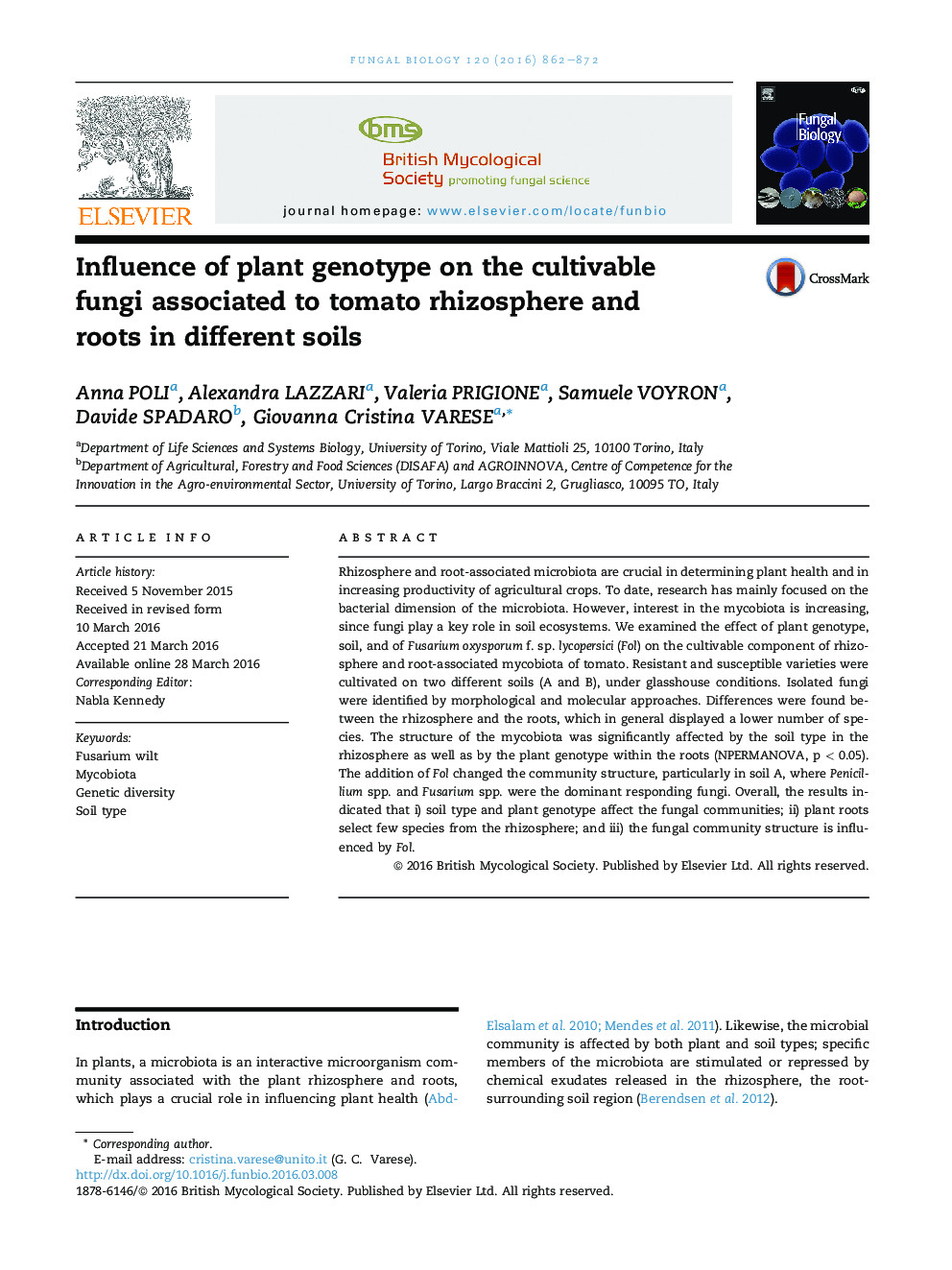| Article ID | Journal | Published Year | Pages | File Type |
|---|---|---|---|---|
| 4356775 | Fungal Biology | 2016 | 11 Pages |
•The rhizosphere and root-associated mycobiota of tomato plants was evaluated.•Resistant and susceptible cultivars of tomato and two soil types were considered.•Soil type affected the structure of the cultivable mycobiota in the rhizosphere.•A role of plant genotype was observed on the root associated fungal community.•Genera that may include biocontrol agents positively responded to pathogen addition.
Rhizosphere and root-associated microbiota are crucial in determining plant health and in increasing productivity of agricultural crops. To date, research has mainly focused on the bacterial dimension of the microbiota. However, interest in the mycobiota is increasing, since fungi play a key role in soil ecosystems. We examined the effect of plant genotype, soil, and of Fusarium oxysporum f. sp. lycopersici (Fol) on the cultivable component of rhizosphere and root-associated mycobiota of tomato. Resistant and susceptible varieties were cultivated on two different soils (A and B), under glasshouse conditions. Isolated fungi were identified by morphological and molecular approaches. Differences were found between the rhizosphere and the roots, which in general displayed a lower number of species. The structure of the mycobiota was significantly affected by the soil type in the rhizosphere as well as by the plant genotype within the roots (NPERMANOVA, p < 0.05). The addition of Fol changed the community structure, particularly in soil A, where Penicillium spp. and Fusarium spp. were the dominant responding fungi. Overall, the results indicated that i) soil type and plant genotype affect the fungal communities; ii) plant roots select few species from the rhizosphere; and iii) the fungal community structure is influenced by Fol.
